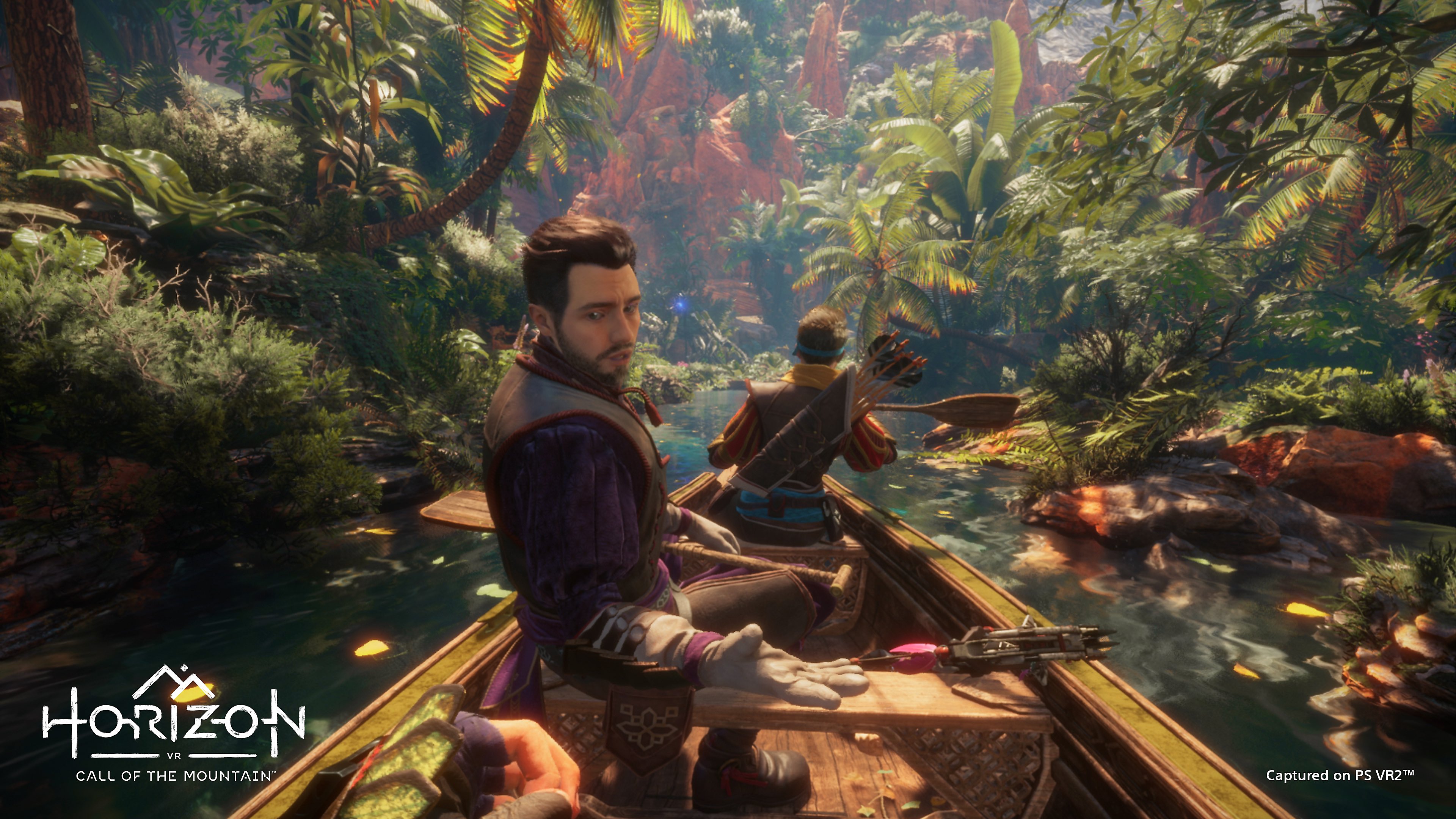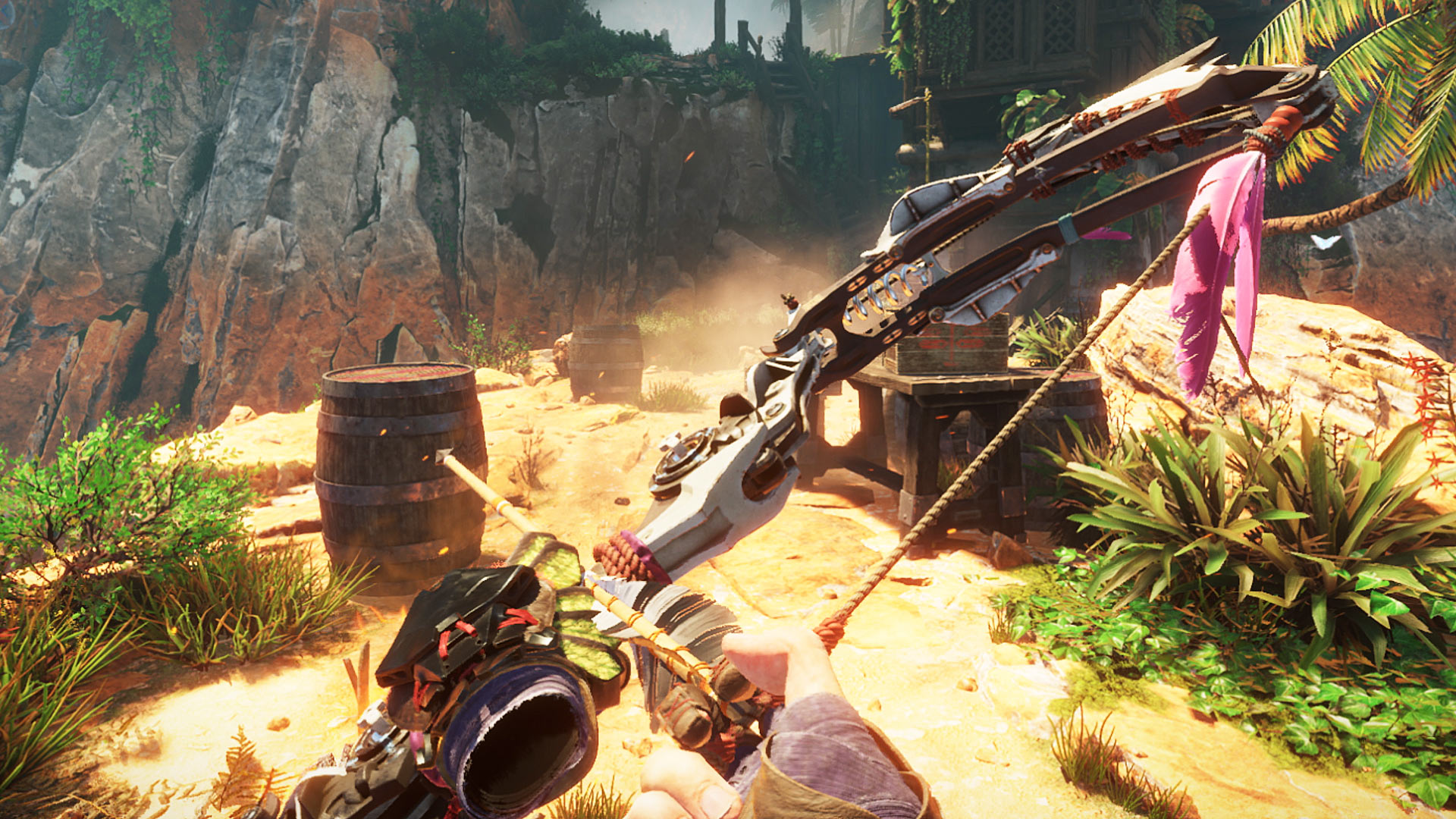
Review of Horizon Call of the Mountain: A Thrilling VR Adventure with Some Slippery Slopes
Bringing the Horizon universe to virtual reality was a bold decision, one that promised immersive exploration of a familiar yet expanded world. With the VR capabilities of the PlayStation VR2, this game provides players with an opportunity to scale towering mountains, hunt robotic beasts, and feel fully immersed in a lush environment brimming with detail and intrigue. While this adventure manages to capture the thrill of VR with some impressive moments, it doesn’t entirely escape the limitations of its genre. Here’s an in-depth look at how this game fares, from both the high points and the occasional rough terrain. More Games at https://kour-io.com
Stunning Visuals and Immersive World-Building
One of the first things to stand out is the visual quality, which is nothing short of breathtaking. From towering cliffs to dense forests and shimmering water surfaces, every element is meticulously crafted to make players feel as if they’ve truly stepped into a living, breathing environment. The developers have clearly dedicated themselves to creating a world that feels alive, with lifelike lighting and intricate details that are both beautiful and functional. As players navigate challenging terrains, they can expect to be treated to incredible vistas, with vibrant landscapes that bring a new perspective to the Horizon universe.
The level of visual fidelity has been highly praised by users, who often highlight the immersive quality of the world as one of the game’s greatest strengths. However, some players have noted that while the graphics shine in close-up details, the performance can be inconsistent. On occasion, textures may load slowly or stutter during intense scenes, particularly when there are a lot of moving parts on screen. While this doesn’t break immersion, it can detract from an otherwise seamless visual experience, especially in moments where players expect smooth transitions.
Climbing Mechanics: Realism Meets Tedium
The core gameplay centers heavily around climbing, and it’s here that the game truly capitalizes on VR. Using the PSVR2 controllers, players physically reach out, grab onto ledges, and pull themselves up, creating a sense of physical effort that feels incredibly satisfying. The mechanics are intuitive and provide a refreshing change of pace, immersing players in the rugged, hands-on experience of mountain climbing. For players new to VR, this tactile approach feels like an exciting leap into the possibilities of virtual interaction.
However, as the game progresses, some players find the climbing mechanics to become repetitive, and the thrill of scaling daunting heights gradually fades into routine. While there are moments of adrenaline-pumping danger—such as narrow ledges and crumbling rock faces—the focus on climbing as a primary mechanic can start to feel overused. Some users have expressed that additional elements or varied obstacles in the climbing sections could have enhanced the gameplay experience, adding more diversity to what sometimes feels like an extended rock-climbing simulator.
Combat and Encounter Design: Awe-Inspiring but Limited
Combat is another key aspect of the game, featuring a range of weaponry that allows players to engage robotic creatures up close. The VR format adds a level of excitement to encounters, as players can use their controllers to physically aim, shoot, and dodge in real-time, bringing a more visceral element to combat. Firing arrows feels satisfying, requiring precise hand-eye coordination and quick reactions, especially when facing off against some of the larger and more menacing robotic foes that the Horizon series is known for.
Despite the exhilarating setup, some players find the combat encounters to be somewhat limited in scope. The game doesn’t offer the same diversity in combat mechanics as the mainline Horizon games, and many of the encounters become formulaic after repeated battles. While the controls make the combat feel dynamic, the AI is often predictable, and many players note that the lack of variety in enemy tactics can make fights feel less challenging over time. For seasoned VR players or fans of complex combat systems, this might feel like a missed opportunity to take full advantage of the Horizon world’s mechanical foes.
Storyline and Pacing: A Scenic Tour with a Few Stops
While the storyline serves its purpose of guiding players through various environments and introducing new challenges, it lacks some of the depth and impact that fans might expect from a title within the Horizon franchise. Players step into the shoes of Ryas, a character with a unique perspective on the Horizon universe, but one that doesn’t feel as fleshed out as the protagonists from the mainline games. The character interactions and dialogue serve to move the plot forward, but they often lack the emotional depth and complex narrative twists that give the Horizon series its rich storytelling.
Many users appreciate the opportunity to experience the world from a fresh perspective, but others feel that the storyline feels more like a guided tour than an epic journey. The pacing is generally steady, but moments of narrative intensity are rare, and some players report feeling that the game leans more on the visual spectacle and VR novelty than on an engaging storyline. While the setting is enough to keep many players invested, those looking for a plot-driven experience might find themselves craving more substance by the time the credits roll.
VR Experience: Immersive but Physically Demanding
As one of the flagship titles for the PSVR2, this game demonstrates the strengths and limitations of VR as a gaming medium. The VR format allows for an unparalleled level of immersion, placing players directly into the world and giving them control over each action in an immediate and personal way. The physicality of climbing, aiming, and exploring makes players feel like they’re truly part of the world, providing an experience that no other format could deliver as effectively.
However, the physicality of VR can also be taxing for some players. The extensive climbing sections, coupled with the need to stand or move around frequently, may be physically exhausting, particularly for longer play sessions. Players prone to VR fatigue or motion sickness have noted that the game’s reliance on active movement can be a barrier to fully enjoying the experience. A few users have suggested that the inclusion of comfort options or adjustable intensity settings might improve accessibility for players who struggle with VR’s physical demands.
Replayability and Content Longevity: An Adventure Worth Replaying?
While the game offers an engaging journey for VR enthusiasts, its replayability might be limited. The campaign provides a linear experience with some optional side activities, but there’s little in terms of varied content or additional incentives to revisit once the main storyline is complete. The lack of substantial branching paths or alternative endings means that players who finish the story may not feel a strong urge to dive back in for another run.
This doesn’t necessarily detract from the overall experience, as many players will find the thrill of the initial playthrough rewarding enough on its own. However, players who prioritize replay value may feel that the game could benefit from additional modes, challenges, or content that would extend its lifespan. Whether this content arrives in future updates or DLC remains to be seen, but for now, the experience may feel complete yet finite for those seeking more content.
Final Thoughts: A Bold VR Venture with Room for Growth
This title succeeds in bringing the Horizon universe to life in a way that’s genuinely innovative, captivating players with stunning visuals and interactive VR mechanics. The climbing and combat experiences make for a unique, immersive journey, while the world-building continues to impress with its attention to detail and scale. However, the game’s tendency to lean heavily on climbing mechanics, coupled with a somewhat straightforward storyline and limited enemy variety, may leave some players wanting more depth and diversity.
For fans of VR who relish the opportunity to immerse themselves in new worlds, this game is a worthwhile experience, one that exemplifies what the technology can do for storytelling and interaction. While it might not fully satisfy players seeking a narrative-driven epic or highly varied gameplay, it provides a vivid and memorable exploration that many will enjoy. Overall, it’s a bold and mostly successful attempt to bridge the world of Horizon with the future of VR gaming, leaving players with an adventure that, while occasionally flawed, captures the imagination.
Comments are Closed